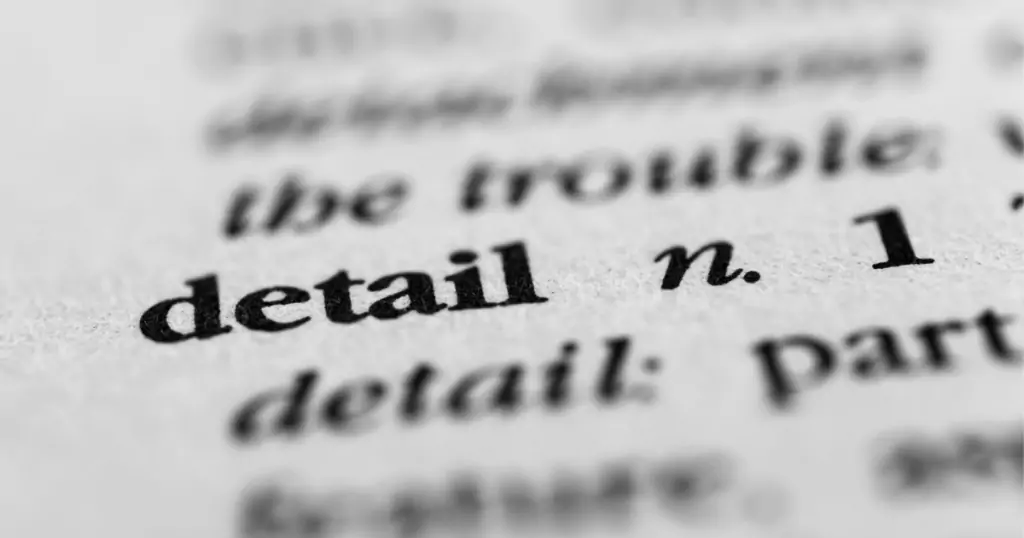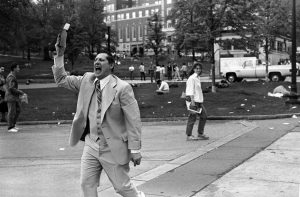In the bustling world of public speaking, the age-old notion that “details give you credibility” has held sway for years. But what if I told you that the most influential figures in the world do things a little differently? But what is it that they do differently?
Contrary to what many think, the details are not what give you credibility. Instead, your ideas and thoughts based on nothing more than curiosity through asking questions are what give you credibility.
Are you still not sure about this? Let me explain…

Breaking Down the Credibility Myth
Before we dive in, let’s unpack the myth that more details equal more credibility. It’s a classic misconception, deeply ingrained in the minds of many aspiring speakers. After all, who wouldn’t want to impress their audience with an avalanche of facts, figures, and statistics? But here’s the truth: drowning your audience in details can be a one-way ticket to a snooze-fest.
In the grand symphony of public speaking, it’s not about how much you know; it’s about how you convey it. Consider the legendary influencers, the charismatic leaders who’ve changed the world – they didn’t become famous for their ability to recite encyclopedias. They rose to prominence because they dared to ask questions and provoke thought.
The Power of Questions
So what should you do? Instead of drowning your audience in specifics, inundate them with questions. It’s a simple yet effective tweak that can make you sound more impactful and authoritative.
Questions are like a magnet for attention. They create an intellectual itch that your audience desperately wants to scratch. When you ask a question, you’re not just providing answers; you’re inviting engagement. And engaged audiences are attentive audiences.
So, why do questions work like magic? Think of it this way: rather than spoon-feeding your audience, you’re guiding them on a quest for knowledge. You’re igniting their curiosity and setting their minds in motion. When they find the answers, it feels like their discovery, not something you forced upon them.

Impactful Questioning
Now, the million-dollar question is, how can you use questions effectively in your speeches and presentations? It’s all about mastering impactful questioning. When it comes to the art of impactful questioning, there are several strategies to keep in mind.
- First, consider leading with a rhetorical question to kickstart your speech and set the tone for the conversation. Rhetorical questions not only pique curiosity but also engage your audience right from the start. For example, you might ask, “Have you ever wondered what separates the great from the mediocre?”.
- Additionally, using open-ended questions is a powerful technique to encourage critical thinking; they don’t have a simple yes or no answer, promoting discussion and exploration. Questions like “What if we reimagined the way we approach problem-solving?” work wonders. To spark lively debates and keep your audience on their toes, pose questions that invite differing opinions, such as “Is tradition an obstacle to progress, or a pillar of stability?”
- Sometimes, questions can be used to build suspense and create anticipation. Hypothetical questions are another tool in your arsenal, painting vivid pictures that encourage your audience to envision various scenarios and outcomes; consider asking, “Imagine a world where we all dared to dream without limits – what would it look like?”
- Finally, empower your audience by encouraging them to ponder questions for themselves and reflect on their experiences and beliefs, as in, “Can you recall a time when you overcame a seemingly insurmountable obstacle?” These question techniques will elevate your public speaking game, making your presentations engaging, thought-provoking, and unforgettable. This way, questions transform you from a speaker into a guide, leading your listeners on a fascinating journey of discovery.
But why do questions work so well, you ask? Well, they shift the dynamic of your speech from passive listening to active participation. Your audience is no longer a passive receptacle of information; they’re engaged, involved, and eager to uncover the answers. Remember, the goal is not to answer every question you pose. It’s to spark thought, encourage discussion, and leave your audience pondering long after your speech ends.

So, here’s the deal: If you want to captivate your audience, ditch the overwhelming details and embrace the captivating world of questions. The great orators of our time – from Martin Luther King Jr. to Steve Jobs – didn’t sway crowds with mind-numbing data; they did it by making people think, wonder, and dream.
As you step into the spotlight, think about what questions you can use to engage your audience. Make them an active part of the conversation, not just passive observers. In doing so, you’ll not only keep their attention but leave a lasting impact. This is the essence of public speaking – not just talking, but connecting, inspiring, and sparking change.
So, the next time you find yourself preparing for a speech, remember this: Less details, more questions! Let your curiosity guide you, and watch as your audience becomes as enthusiastic about your words as you are.











